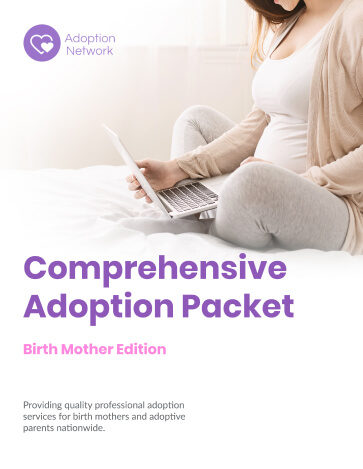
What Does Adoption Mean to a 4-6 Year Old?
At a young age, adopted children are aware of others and notice that people don’t look alike. They see variations in skin tone, hair, eyes and body shapes. This includes noticing pregnant women and asking questions.
Continue answering honestly: “She has a baby in there.” If they ask if they came from your belly, answer “No. You were in another lady’s belly, but came to live with me when you were born.” If they say that makes them sad, you can say that makes you sad, too. But you are “so happy you found each other.” They may ask about having a brother or sister. Any of these scenarios is an opportunity to start or continue the adoption conversation.
By this age, children love to hear stories about themselves. How they came home to live with you is usually one of their favorites. Use photos and maps to show them where they came from and how small they were.
“This is where you were born.” (photo of the hospital).
“This is the first time I held you. Look how small you were.” (photo).
“We stayed in ___________ until we could take you home.” (photos of town where they were born).
You may decide to show them photos of the birth family. “This was the lady who had you in her belly. Her name is ____.”
“This is the first time grandma and grandpa met you.” (photo).
As children start school, they are spending more time with peers and other adults. They are being exposed to the world outside your home. Having heard their adoption story, they may think all kids are adopted. School may be the first exposure to the different way they joined your family. Being adopted means they are different.
They may assume a peer’s pregnant mother will make an adoption plan. Some may ask. “Where is the baby going?” Reading time and discussions can include family formation and difference. Typical assignments, as early as pre-K, include “Who Am I?” and include photos of them at birth. For a child adopted as a toddler, there is no baby photo. This alone leads to conversations about adoption, with your child. Make sure your child has some simple answers to:
“Where is your real mother/father?” – “You know them. They pick me up every day.” “Oh, you mean my birth mother. She lives in ____.”
“Didn’t she want you”?” – “She couldn’t take care of any baby when I was born.”
You are having more and more conversations about adoption and your child understands more. As you talk, you are teaching them an adoption vocabulary. You are also reinforcing the fact that you are there to talk about adoption. The more comfortable you are the better. If your child picks up that you don’t want to talk or have difficulty talking about adoption, they may feel something is wrong. If you need more time to answer, let your child know “That’s an interesting question. I have to think about it” or “I don’t know, but I will try to find out.” Specifics of your child’s history and adoption should be kept within your immediate family. Your child should hear all adoption related information from you, and then have the choice of whom to tell and when. If you need help figuring out an answer, seek assistance from an adoption social worker or counselor.
Children of this age often enjoy spending time with other adopted families. It reinforces the concept they are not the “only” adopted child and gives them a peer group of kids with similar experiences. There are also many children’s books now available. Be sure to read through a book, make sure you are comfortable with how the family is portrayed, and that you can answer questions raised by the book, before reading it with your child.
You can also tell them their story. Start as far back as when you decided you wanted a child, if you are in a relationship—how you met, when you started “looking” for them, how you met them, etc. As you add details, you will want to confirm what they know. Ask them to retell the story back to you and listen carefully to what they are repeating and what they are adding to the story. You can also ask questions and see if they can answer them. Then ask if they have any questions for you.
It means a lot to a child to have adults around who can help them when they need it. This applies to adoption, too. Consider sharing the adoption with teachers, so that if the subject comes up, they can help your child explain adoption to others, and alert you if the issue has been raised in the classroom.
As you child learns the language, they will be able to answer (or not) when asked a question. With you as their mentor, they will continue to come to you for assistance and advice and consolation when needed. Knowing that their parent is always there for them means the world to a child.
Available 24/7 to Answer Your Adoption Questions


Search Adoption Network
Speak with a Specialist 1-800-367-2367